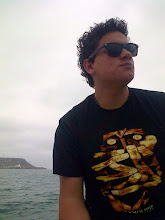Originally known as Walker's Kilmarnock Whisky, the Johnnie Walker brand is a legacy left by John ‘Johnnie’ Walker after he started to sell whisky in his grocer’s shop in Ayrshire, Scotland. The brand became popular, but after Walker's death in 1857 it was his son Alexander Walker and grandson Alexander Walker II who were largely responsible for establishing the scotch as a popular brand. Under John Walker, whisky sales represented eight percent of the firm’s income; by the time Alexander was ready to pass on the company to his own sons, that figure had increased to between 90 and 95 percent.
Prior to 1860 it was illegal to sell blended whisky. During that time John Walker sold a number of whiskies — notably his own Walker’s Kilmarnock. In 1865 John’s son Alexander produced their first blend, Walker’s Old Highland.
Alexander Walker first introduced the iconic square bottle in 1870. This meant fewer broken bottles and more bottles fitting the same space. The other identifying characteristic of the bottle is the label, which is applied at an angle of 24 degrees. The angled label means the text on the label could be made larger and more visible.
From 1906–1909 John’s grandsons George and Alexander II expanded the line and introduced the colour names. In 1908, when James Stevenson was the Managing Director, there was a re-branding of sorts. The whisky was renamed from Walker's Kilmarnock Whiskies to Johnnie Walker Whisky. In addition, the slogan, "Born 1820 – Still going Strong!" was created, along with the Striding Man, a figure used in their advertisements to this day.
Johnnie Walker White was dropped during World War I. In 1932, Alexander II added Johnnie Walker Swing to the line, the name originating from the unusual shape of the bottle, which allowed it to rock back and forth.
The company joined Distillers Company in 1925. Distillers was acquired by Guinness in 1986, and Guinness merged with Grand Metropolitan to form Diageo in 1997.
Johnnie Walker is no longer blended in Kilmarnock, and has not been for many years. The historic bonded warehouses and company offices (now local authority) can still be seen in Strand Street and John Finnie Street.
On 1st July 2009, Bryan Donaghey, Diageo Managing Director for Global Supply Scotland, announced that Diageo intended to cease production of Johnnie Walker Whisky at the historic plant in Kilmarnock. Under a restructuring program across Scotland, production would be moved from the brand's original home to Diageo plants in Leven, Fife and Shieldhall, Glasgow. The Johnnie Walker plant, the largest employer in the town of Kilmarnock, is intended to close its doors by the end of 2011.
News of the planned closure has had widespread media attention and condemnation from MPs, celebrities, as well as the townsfolk of Kilmarnock and whisky drinkers all around the world. Following the decision, a public campaign started to persuade Diageo as a company to reverse this decision. However on 9th September 2009 Diageo stated that they intended to press ahead with the move away from Kilmarnock and that the matter was "closed".
jueves, 27 de mayo de 2010
Suscribirse a:
Enviar comentarios (Atom)






























No hay comentarios:
Publicar un comentario